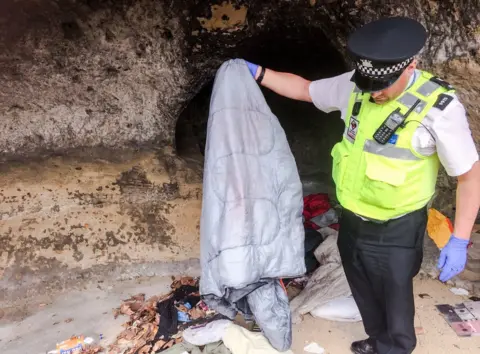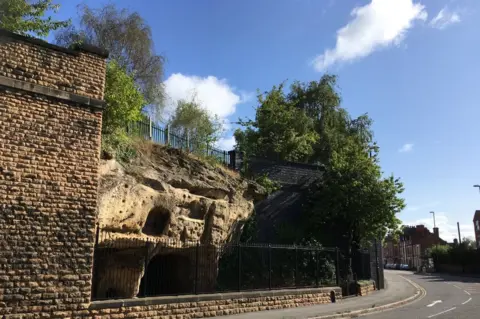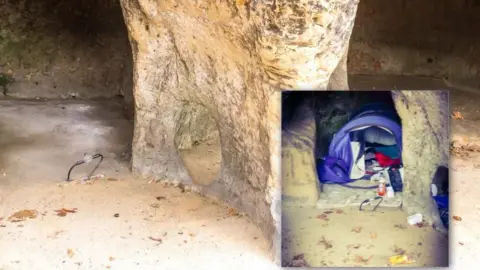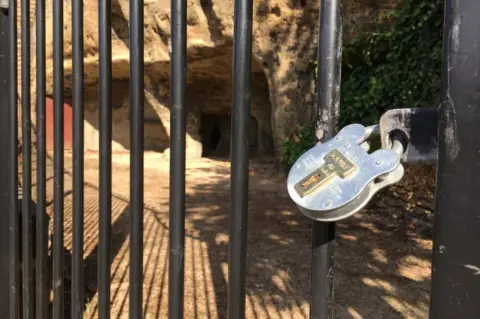Two homeless people found living in caves in Nottingham
 Nottingham City Council
Nottingham City CouncilTwo homeless people have been found living in caves near a city centre for at least two weeks.
The pair set a tent up inside one of the caves and used the other for storage after somehow getting past an 8ft-high fence.
Nottingham City Council said the homeless people left after two of their officers gave them some advice.
However, a residents' association chairman is worried the pair may now be living in even worse conditions.

"It is very sad," said Greg Feltham from Sneinton Tenants and Residents Association.
"There has been such an increase in people rough sleeping in this area."
He added that sleeping in caves "is not how people should be living in the 21st Century. They should have more appropriate accommodation to meet their needs."
Nottingham has about 850 man-made caves which were previously used as dungeons, bomb shelters and homes.
These particular ones are known as the Sneinton Hermitage caves and are on the edge of Nottingham city centre.
"It is a relatively small area with two little caves side-by-side," said Mr Feltham.
"One had their tent in and they were using the other for general storage."
 Nottingham City Council
Nottingham City Council Mr Feltham said there used to be quite a lot of rough sleepers in the caves before the fencing was installed a few years ago.
"Somehow this couple have found a way of getting over it," he said.
"I would like to see a concentrated effort nationally in helping homeless people."

Nottingham City Council said its community protection officers (CPOs) became aware of the rough sleepers earlier this week, went to check on their welfare and told them about the support services available.
"By the time our CPOs returned on Thursday, the pair had moved on, and so they arranged for the clear-up of the site, including the removal of drugs paraphernalia."

Nottingham's caves

- There are about 850 man-made caves in Nottingham, which were used as Victorian follies, dungeons, bomb shelters, homes, tanneries, secret hideouts and for storage
- Some of Nottingham's caves date back to the 9th Century
- Some caves are very small but the largest is about 200m in length
- On most caves you can still see the pick axe marks from when they were created
- Nottingham is built on soft sandstone making it easier to dig into, but strong enough for structural stability
- Cave dwelling has been a part of the city's history, particularly during the Industrial Revolution when homes were scarce
- Caves are used to keep ale at a consistent cool temperature at some pubs in the city
- A Welsh monk named Asser referred to Nottingham as Tig Guocobauc, which means "house" or "place of caves"

Follow BBC East Midlands on Facebook, on Twitter, or on Instagram. Send your story ideas to [email protected].
